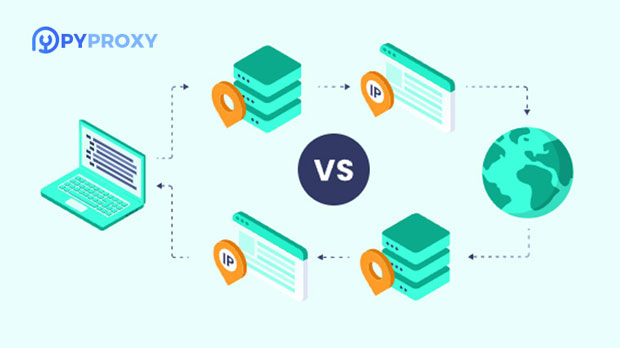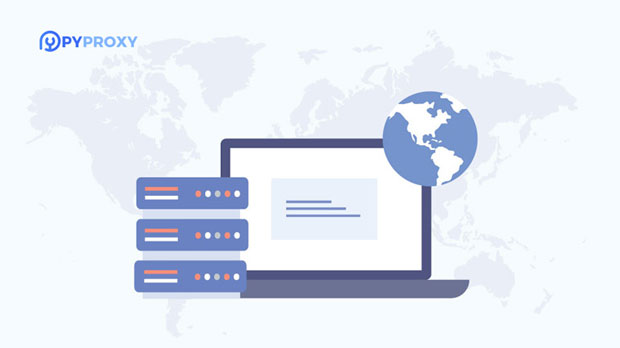What are the risks of using a free proxy or VPN to free up IP addresses?
In today's digital age, privacy concerns have led many to explore free proxies and VPNs to mask their IP addresses. While these tools can offer anonymity and allow users to bypass geographic restrictions, they come with their own set of risks. These risks can range from security vulnerabilities to potential breaches of personal information, as well as negative consequences for online activities. This article will delve into the specific dangers of using free proxies and VPNs, focusing on issues such as data theft, lack of trustworthiness, malware threats, and the potential for a compromised online experience. Understanding Free Proxies and VPNsBefore discussing the risks, it is essential to understand what free proxies and VPNs are. A proxy server acts as an intermediary between a user's device and the internet, routing traffic through itself to mask the user's original IP address. VPNs, on the other hand, create a secure, encrypted tunnel between the user’s device and a server, making it harder for third parties to monitor the user’s activities.While both proxies and VPNs are commonly used to enhance privacy, free versions often present significant drawbacks. These tools may not have the robust security features of paid services and can expose users to potential dangers.1. Data Privacy and Security ConcernsOne of the primary risks of using free proxies and VPNs is compromised data privacy and security. Since these services are free, they often rely on monetizing their user base through various means, such as collecting and selling user data. Free services may track your browsing history, personal information, and even login credentials, which puts your privacy at serious risk.Furthermore, free VPNs or proxies may lack advanced encryption protocols. This makes them vulnerable to data breaches and cyberattacks. Without strong encryption, sensitive information like passwords, bank details, or emails may be intercepted by malicious actors.2. Malware and Adware InfectionsAnother significant risk associated with free proxies and VPNs is the potential for malware and adware infections. Some free VPN or proxy services come bundled with malicious software, which is either embedded into the software itself or delivered via pop-up ads. These malware infections can lead to system slowdowns, data loss, or even unauthorized access to personal information.Furthermore, some free VPN providers inject ads into your browsing experience, often without your consent. These ads might be more than just an inconvenience—they could lead to phishing attempts, where malicious websites disguise themselves as legitimate services to steal your personal data.3. Unreliable and Inconsistent ConnectionsFree VPNs and proxies are often unreliable. Since they are offered at no cost, they may not have the infrastructure or resources to provide stable connections. Users can experience slow speeds, frequent disconnections, and network downtime. This can be particularly problematic for individuals who rely on these services for business or secure communications.Additionally, free proxies and VPNs are usually overwhelmed with users, further exacerbating connection problems. This can result in a less secure experience, as users are more likely to experience IP address leaks or vulnerabilities that expose their online identity.4. Risk of IP LeaksWhile VPNs and proxies are designed to hide your real IP address, free versions are more likely to have vulnerabilities that could lead to IP leaks. These leaks occur when the VPN or proxy fails to protect your true IP address, allowing websites or malicious parties to identify you and track your activity.For example, DNS or WebRTC leaks can occur when a user's real IP is exposed despite using a VPN or proxy. Free services are often ill-equipped to handle such issues, putting users at greater risk of being exposed.5. Limited Features and Poor Customer SupportFree proxy and VPN services often lack the advanced features and customer support that paid services provide. For example, users may not have access to features like multi-device support, high-speed servers, or advanced security measures, which could make their online activities less secure. The lack of responsive customer support further complicates issues when something goes wrong.In case of problems with the connection, or if users experience potential security breaches, free services may not offer the same level of assistance as paid services. This lack of support can leave users vulnerable to threats without any recourse.6. Risk of Legal ConsequencesUsing free proxies and VPNs to access restricted content or to bypass censorship may violate the terms and conditions of certain websites or platforms. In some cases, accessing geo-restricted content via these methods may lead to legal issues, especially if it involves violating intellectual property rights or engaging in illegal activities.Moreover, certain countries have stringent laws regarding the use of VPNs and proxies. If users are caught violating these laws, they could face fines or other legal repercussions. Since free proxies and VPNs are often unregulated, users may unknowingly expose themselves to legal risks when using them to bypass restrictions.7. Ethical ConsiderationsEthical concerns also play a significant role in the risks associated with free proxies and VPNs. Some free services may log and sell users' data to third parties without their knowledge or consent. This practice not only violates user privacy but also undermines the very purpose of using a VPN or proxy in the first place.Additionally, free services may be used by malicious actors for illicit activities. Cybercriminals can use free proxies and VPNs to carry out attacks, hide their locations, and perform illegal activities, which can lead to the services being blacklisted or blocked, affecting all users.ConclusionIn conclusion, while free proxies and VPNs may seem like a quick and easy solution for online privacy, they carry significant risks. These include compromised data privacy, malware infections, unreliable connections, IP leaks, limited features, potential legal consequences, and ethical concerns. Users must be aware of these dangers and consider the potential trade-offs before using free services. For individuals who value their privacy and online security, investing in a paid and reputable VPN or proxy service is highly recommended to ensure safer and more reliable browsing experiences.---Risks of Using Free Proxy or VPN to Release IP AddressIn today’s digital era, many individuals resort to free proxies and VPNs to hide their IP addresses due to privacy concerns. These tools can provide anonymity and bypass geographical restrictions; however, they also bring certain risks. These risks range from security vulnerabilities to potential data breaches, and even negative impacts on online activity. This article will explore the specific dangers associated with using free proxies and VPNs, including issues related to data theft, trustworthiness, malware threats, and the likelihood of a compromised online experience.Understanding Free Proxies and VPNsBefore diving into the risks, it is important to understand what free proxies and VPNs are. A proxy server serves as an intermediary between the user’s device and the internet, routing traffic through itself to hide the user’s original IP address. VPNs, on the other hand, create a secure, encrypted tunnel between the user’s device and a server, making it difficult for third parties to monitor the user’s online activities.Although both proxies and VPNs are frequently used to enhance privacy, free versions of these services come with certain limitations. These tools may not offer the strong security features found in paid services, and they can expose users to a range of risks.
2025-01-20

























































